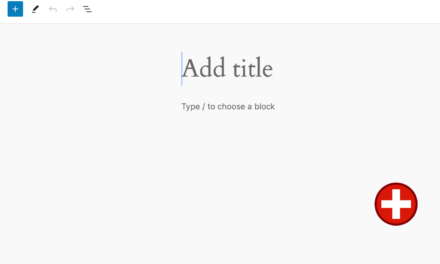In the world of WordPress, categories and tags are essential tools for organizing your content. They help you structure your website’s information in a way that is both user-friendly and search engine-friendly. If you’re new to WordPress, understanding how to effectively use categories and tags can make a big difference in how visitors interact with your content. This article will walk you through what categories and tags are, how they differ, and best practices for using them on your WordPress site.
Understanding the Basics
What Are Categories?
Categories in WordPress are broad groupings of your posts. Think of them as the main topics or sections of your website. When you create a new post, you can assign it to one or more categories, which helps organize your content by topic. For example, if you have a blog about food, your categories might include “Recipes,” “Restaurant Reviews,” “Nutrition Tips,” and “Cooking Techniques.”
Categories are hierarchical, meaning you can create subcategories within categories. This is particularly useful if your site covers a wide range of topics and you want to create a more structured hierarchy. For instance, under the “Recipes” category, you might have subcategories like “Desserts,” “Main Courses,” and “Appetizers.”
What Are Tags?
Tags, on the other hand, are more specific keywords that describe the details of your posts. While categories group posts into broad sections, tags allow you to highlight specific topics or elements within those posts. Continuing with the food blog example, a post categorized under “Recipes” might have tags like “chocolate,” “vegan,” “gluten-free,” or “quick meals.”
Tags are non-hierarchical, meaning there’s no parent-child relationship as there is with categories. You can assign as many tags as you like to each post, and they can overlap across categories. Tags are a great way to provide additional context and make it easier for visitors to find related content on your site.
Why Categories and Tags Matter
Before diving into how to use categories and tags, it’s important to understand why they matter. Both play a crucial role in:
- Improving User Experience: Properly organized content helps users navigate your site more easily. If a visitor lands on a post they like, they can click on a category or tag to find similar content, which can keep them on your site longer.
- Enhancing SEO (Search Engine Optimization): Search engines like Google use categories and tags to understand the structure of your site and the relationships between different pieces of content. Well-organized content is more likely to rank higher in search results.
- Creating a Structured Site: Categories and tags help you keep your content organized, which is especially important as your site grows. They prevent your site from becoming a jumbled mess of posts that are hard to navigate.
How to Use Categories and Tags in WordPress
Now that you understand what categories and tags are and why they matter, let’s dive into how to use them effectively on your WordPress site.
Creating and Managing Categories
Step 1: Create a Category
When you’re writing or editing a post in WordPress, you’ll find the Categories section on the right-hand side of the editor. To create a new category:
- Click on the “Add New Category” link.
- Enter the name of your category.
- If you want this to be a subcategory, select a parent category from the dropdown menu.
- Click “Add New Category.”
You can also create and manage categories from the WordPress dashboard:
- Go to Posts > Categories.
- Here, you can see all your existing categories, add new ones, edit existing ones, and delete categories you no longer need.
Step 2: Assign Posts to Categories
When you’re writing a post, you can assign it to one or more categories by checking the boxes next to the relevant categories in the Categories section. It’s generally best to assign each post to just one category to avoid confusion and clutter.
Step 3: Organize Your Categories
Over time, as your site grows, you may find that you need to reorganize your categories. You can do this by:
- Merging categories: If you have two categories that cover very similar topics, you might want to merge them.
- Creating subcategories: If a category becomes too broad, consider creating subcategories to better organize your content.
- Deleting unnecessary categories: If a category is no longer relevant, you can delete it. Just be sure to reassign any posts in that category to a new one before deleting it.
Creating and Managing Tags
Step 1: Create a Tag
You can create tags in much the same way as categories. When writing or editing a post:
- In the Tags section on the right-hand side, start typing the name of your tag.
- If it’s a new tag, press Enter to add it.
- If it’s an existing tag, it will appear in a dropdown, and you can select it.
You can also manage tags from the WordPress dashboard:
- Go to Posts > Tags.
- Here, you can see all your existing tags, add new ones, edit existing ones, and delete tags you no longer need.
Step 2: Assign Tags to Posts
Tags are often used more liberally than categories. You can assign as many tags as you like to each post, but be mindful of over-tagging. A good rule of thumb is to keep your tags relevant and specific to the post’s content.
Step 3: Organize Your Tags
Like categories, it’s important to periodically review and organize your tags. Over time, you might find that you have redundant or similar tags that can be merged. You can also delete tags that are no longer relevant.
Best Practices for Using Categories and Tags
To get the most out of categories and tags, follow these best practices:
1. Use Categories for Broad Topics, Tags for Specifics
Categories should be used to group posts into broad topics, while tags should be used to describe specific details or themes within those posts. For example, on a travel blog, you might use categories like “Destinations,” “Travel Tips,” and “Gear Reviews,” while tags could include “Europe,” “budget travel,” “backpacking,” or “carry-on luggage.”
2. Avoid Over-Tagging
While it might be tempting to add lots of tags to a post, it’s better to keep them focused. Too many tags can dilute their effectiveness and make it harder for users to find related content. Aim for a handful of relevant tags that accurately describe the content.
3. Keep Your Categories Organized
As your site grows, you may need to revisit your category structure. Don’t be afraid to reorganize your categories, merge similar ones, or create subcategories to keep things tidy. Remember, a well-organized site is easier for visitors to navigate and more likely to rank well in search engines.
4. Use Tags Consistently
Consistency is key when it comes to tags. If you have multiple posts on the same topic, make sure to use the same tag across all of them. This makes it easier for users to find related content and helps search engines understand the relationships between your posts.
5. Leverage Categories and Tags for SEO
Both categories and tags can improve your site’s SEO. When search engines crawl your site, they look at categories and tags to understand the content’s structure and relevance. Use descriptive names for your categories and tags, and make sure they reflect the content accurately.
6. Don’t Create Too Many Categories
It’s better to start with a few well-thought-out categories than to create too many. As your content grows, you can always add more categories or create subcategories if needed. Too many categories can overwhelm visitors and make your site harder to navigate.
7. Use Category and Tag Descriptions
WordPress allows you to add descriptions to your categories and tags. While these descriptions aren’t always displayed by default on your site, they can be useful for SEO and for themes or plugins that display them. Adding a brief description can help clarify the purpose of a category or tag.
Common Mistakes to Avoid
While categories and tags are powerful tools, they can be misused. Here are some common mistakes to avoid:
1. Using Categories and Tags Interchangeably
Categories and tags serve different purposes, and it’s important to use them correctly. Categories are for broad topics, while tags are for specific details. Don’t use tags as a substitute for categories or vice versa.
2. Overloading Posts with Tags
Adding too many tags to a post can dilute their effectiveness and make your site look cluttered. Stick to a few relevant tags that accurately describe the post’s content.
3. Neglecting to Organize Categories
As your site grows, it’s easy to end up with a disorganized category structure. Regularly review and refine your categories to ensure they remain useful and relevant.
4. Creating Too Many Categories
Having too many categories can overwhelm users and make your site harder to navigate. Start with a few key categories and add more as your content grows.
5. Ignoring Category and Tag Descriptions
While category and tag descriptions are optional, they can be helpful for both users and search engines. Don’t overlook the opportunity to add a brief description that clarifies the purpose of a category or tag.
Categories and Tags in Custom Post Types
If you’re using custom post types on your WordPress site, you can also use categories and tags to organize them. By default, categories and tags apply to posts, but you can enable them for custom post types as well. This is especially useful if you’re running a site with
multiple types of content, like a portfolio, testimonials, or products.
To enable categories and tags for custom post types, you’ll need to modify the custom post type’s code or use a plugin that provides this functionality.
Conclusion
Categories and tags are more than just organizational tools—they are fundamental to how users navigate your site and how search engines understand your content. By using them effectively, you can create a well-structured, user-friendly site that keeps visitors engaged and helps you rank higher in search results.
Start by carefully planning your categories, keeping them broad and organized, and use tags to highlight specific details and themes within your content. Regularly review and refine your categories and tags as your site grows, and don’t be afraid to reorganize when needed.
With these best practices in mind, you’ll be well on your way to mastering categories and tags in WordPress, making your site both easier to navigate and more successful in the search engine rankings.





